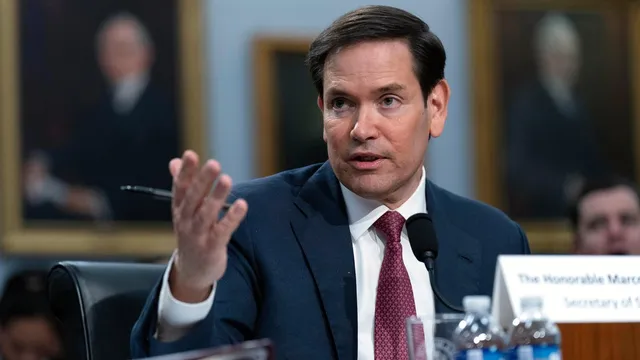
Marco Rubio restructures State Department to eliminate 300 offices
2025-05-29 17:57- The State Department plans to merge or cut over 300 offices to promote efficiency and reduce bureaucracy.
- These changes will result in staff reductions of approximately 3,400 personnel in the U.S.
- The overhaul is intended to empower embassies and regional bureaus, emphasizing effective and modern diplomacy.
Express your sentiment!
Insights
In early May 2025, the State Department in the United States notified Congress about a comprehensive reorganization aimed at restructuring the agency significantly. This effort, characterized as the most substantial overhaul since the Cold War, involves cutting and consolidating over 300 domestic offices which are deemed inefficient or redundant. The proposed plan seeks to eliminate approximately 3,400 staff members, representing 15% to 20% of the agency's domestic workforce. The changes are initiated under the direction of Secretary of State Marco Rubio and are part of a broader strategy to enhance the department's efficiency in addressing global threats more effectively. The rationale behind the reorganization involves streamlining operations and reducing what has been termed a 'bloated bureaucracy.' Officials have indicated that the intention is not necessarily to achieve cost savings but to empower regional bureaus and embassies to address challenges directly. Rubio aims to enhance the capabilities of ambassadors in the field, thereby implementing what has been characterized as 'America First' diplomacy. Although the plan includes the elimination of certain divisions, there are also proposals for new offices to take on emerging issues such as artificial intelligence and hypersonic weapons. This restructuring proposal has drawn immediate criticism, particularly from those who advocate for human rights and refugee programs. Changes to programs such as the resettlement of Afghan nationals have faced backlash, particularly from veterans and advocacy groups who argue these cuts undermine the United States' commitments to allies. With some divisions reduced or entirely reorganized, critics warn such moves could impact America's stance on global security and humanitarian efforts, with historical ties to international collaboration being compromised. Overall, the reorganization reflects an ambitious shift in American diplomacy, as the State Department looks to navigate complex modern challenges while attempting to reduce bureaucratic inefficiencies. The implementation of these changes, slated for completion by July 1, is closely monitored as it could fundamentally alter the operational landscape of American foreign relations.
Contexts
The history of State Department restructuring reflects the evolving priorities and international landscape faced by the United States. From its inception, the U.S. State Department has undergone numerous reorganizations to better address diplomatic challenges and improve administrative efficiency. Early in its history, it focused primarily on Europe, but as the nation grew, so too did the necessity for a more comprehensive approach to global diplomacy, prompting restructuring efforts to include regions such as Asia, Africa, and Latin America. The department's responsibilities expanded in response to developments such as the World Wars and the Cold War, necessitating a more robust and adaptable organizational structure. During the post-World War II era, the establishment of international institutions and commitment to multilateralism led to significant changes in the State Department's frameworks. The reorganization of the 1950s, influenced by the onset of the Cold War, particularly focused on enhancing the department's capabilities to engage with global ideological conflicts. This period saw the introduction of specialized bureaus and offices dedicated to various regions and issues, such as economic affairs and security, marking a pivotal shift toward a more structured and proactive diplomatically engaged government. As national security threats evolved, the State Department's restructuring processes continued. In the 1970s and 1980s, crises such as the Vietnam War and the Iranian Revolution prompted reassessments of U.S. foreign policy and operations. The Foreign Service Act of 1980 aimed to streamline the recruitment and career development of diplomats and introduced new policies to foster accountability and performance within the department. Additionally, the restructuring reflected a growing emphasis on human rights and global humanitarian efforts, illustrating a departure from purely strategic calculations toward a moral imperative in diplomacy. Entering the 21st century, the events of September 11, 2001, marked another significant inflection point in the department's structure and approach. A focus on counterterrorism and global security reshaped organizational mandates and operational priorities, leading to increased integration with the Department of Homeland Security and other agencies. Furthermore, the rise of digital diplomacy and the importance of public engagement in foreign relations necessitated the establishment of new roles and initiatives within the State Department. Recent restructuring efforts aim to better align with global challenges, emphasizing innovation, adaptability, and cross-departmental collaboration.